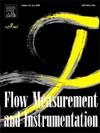Enhanced prediction of discharge coefficients in Harmonic Plan Circular Weirs using advanced machine learning and ensemble techniques
IF 2.3
3区 工程技术
Q2 ENGINEERING, MECHANICAL
引用次数: 0
Abstract
This study leverages advanced machine learning models—Natural Gradient Boosting (NGBoost), Categorical Boosting (CatBoost), and Tabular Network (TabNet)—to predict the discharge coefficients (Cd) of Harmonic Plan Circular Weirs (HPCWs). To achieve enhanced predictive accuracy, a Stacking Ensemble-based Hybrid (StEH) model was developed, integrating the strengths of the individual models. The methodology involved a comprehensive experimental dataset, split into 75 % for training and 25 % for testing. Key performance metrics, including R2, RMSE, Symmetric Mean Absolute Percentage Error (sMAPE), Scatter Index (SI), and Weighted Mean Absolute Percentage Error (WMAPE), were employed to assess model accuracy. Additionally, the Regression Error Characteristic (REC) curve, Kling-Gupta Efficiency (KGE), and Taylor diagram provided statistical and visual insights into model performance. During the training stage, the NGBoost model emerged as the best-performing model, achieving an exceptional R2 of 0.9999, an RMSE of 0.0009, an sMAPE of 0.1100 %, an SI of 0.0014, and a WMAPE of 0.1063 %. The StEH model closely followed in second place, with strong performance metrics including an R2 of 0.9986 and an RMSE of 0.0034. In the testing stage, the TabNet model outperformed the other models, with an R2 of 0.9893, an RMSE of 0.0095, an sMAPE of 1.0191 %, an SI of 0.0144, and a WMAPE of 1.0444 %. The CatBoost model secured the second position during this phase, demonstrating reliable performance with an R2 of 0.9779 and an RMSE of 0.0136. Additionally, sensitivity analysis using ANOVA and SHAP methods identified the ratio of the head to weir height (h/P) as the most significant parameter affecting Cd, followed by the net crest length to weir height ratio (lC/P) and the number of cycles (N). This research underscores the efficacy of ensemble learning techniques, providing valuable insights into the design and optimization of weirs.
求助全文
约1分钟内获得全文
求助全文
来源期刊

Flow Measurement and Instrumentation
工程技术-工程:机械
CiteScore
4.30
自引率
13.60%
发文量
123
审稿时长
6 months
期刊介绍:
Flow Measurement and Instrumentation is dedicated to disseminating the latest research results on all aspects of flow measurement, in both closed conduits and open channels. The design of flow measurement systems involves a wide variety of multidisciplinary activities including modelling the flow sensor, the fluid flow and the sensor/fluid interactions through the use of computation techniques; the development of advanced transducer systems and their associated signal processing and the laboratory and field assessment of the overall system under ideal and disturbed conditions.
FMI is the essential forum for critical information exchange, and contributions are particularly encouraged in the following areas of interest:
Modelling: the application of mathematical and computational modelling to the interaction of fluid dynamics with flowmeters, including flowmeter behaviour, improved flowmeter design and installation problems. Application of CAD/CAE techniques to flowmeter modelling are eligible.
Design and development: the detailed design of the flowmeter head and/or signal processing aspects of novel flowmeters. Emphasis is given to papers identifying new sensor configurations, multisensor flow measurement systems, non-intrusive flow metering techniques and the application of microelectronic techniques in smart or intelligent systems.
Calibration techniques: including descriptions of new or existing calibration facilities and techniques, calibration data from different flowmeter types, and calibration intercomparison data from different laboratories.
Installation effect data: dealing with the effects of non-ideal flow conditions on flowmeters. Papers combining a theoretical understanding of flowmeter behaviour with experimental work are particularly welcome.
 求助内容:
求助内容: 应助结果提醒方式:
应助结果提醒方式:


